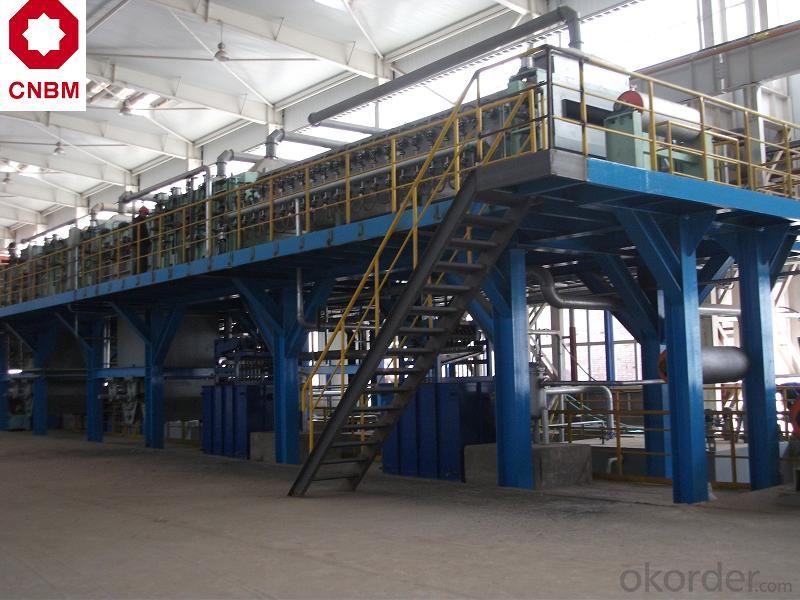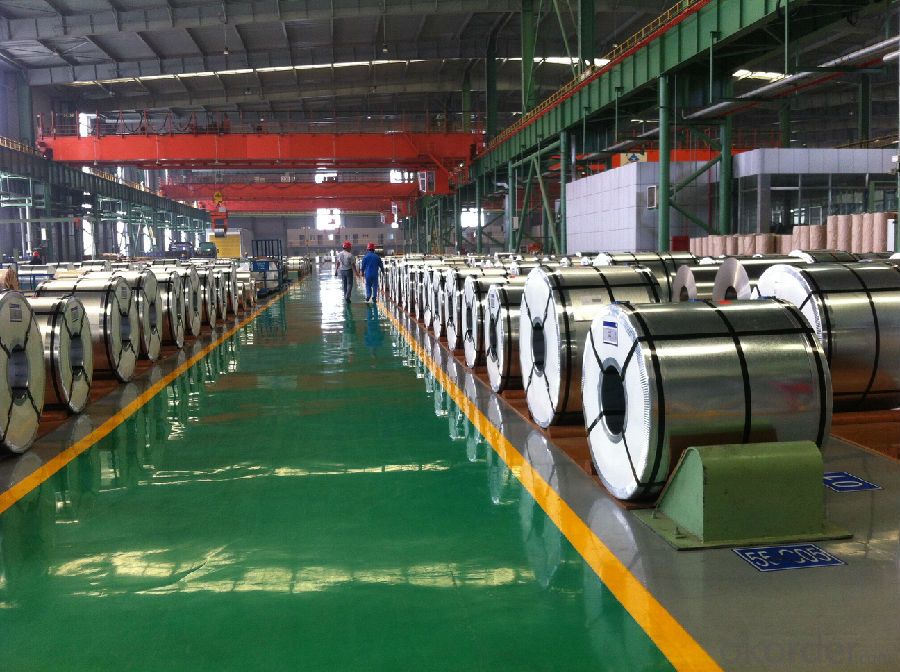Tinplate For Kitchenware, SPCC/MR, First Grade/Secondary Grade
- Loading Port:
- Tianjin
- Payment Terms:
- TT OR LC
- Min Order Qty:
- 25 m.t.
- Supply Capability:
- 50000 m.t./month
OKorder Service Pledge
OKorder Financial Service
You Might Also Like
1.Usage
Tinplate is widely used for making all types of containers, containing industrial usage such as paint can, oil can, aerosol cans etc., and food cans like milk powder cans, tomato paste can, dry food cans etc.
2. Quality
As a state owned company and a large tinplate supplier in China, our tinplate quality ranks 1st level in China, similar to Bao Steel, Posco etc.
3. Specification
standard: GB/T2520, JIS G3303, DIN EN10202
Material: MR /SPCC
Thickness available: 0.16-0.50MM
Width available: 600~1050MM
Temper grade: T1 – DR8
Tin coating: ordinary 2.8g/2.8g, 5.6g/5.6g and others
Package: sea worthy export package.
Applications: Tin can for chemicals & paint cans, industrial cans, food cans
4. Our factory photo:


5. Our Markets:
now our tinplate has been sold to more than 30 countries, including Europe countries, Gulf Area, South American, South Afric etc.
6. Our Overseas Wareouses:
Furthermore, in the year 2014, we have more than 10 overseas warehouses all over the word, located in KSA, UAE, Oman, Russia, Kuwait, Qatar, Oman, Chile, Brazil etc.
7. FAQ
a. what's the annual output?
about 500,000 tons per year.
b. where's the raw matrial from?
our hot rolled coil is purchased from Capital Steel and other state owned mill, with quite good quality.
c. how long is the delivery time?
normally for SPCC about 45~55 days, while 65~75 days for MR material
d. how to control the quality during production process?
inside our workshop, we have MES syestem. It realizes the optimization of the production procedure in the workshop. It could record each step of the whole production procedures, and if some problem appears, factory could easily found and take action, it’s quite helpful to monitor and control the quality.
- Q:What are the advantages of using tinplate for toys and games?
- One advantage of using tinplate for toys and games is its durability. Tinplate is a strong material that can withstand rough handling and play, making it ideal for toys that are often subjected to wear and tear. Additionally, tinplate is resistant to corrosion, ensuring that the toys remain in good condition even with prolonged exposure to moisture or other environmental factors. Furthermore, tinplate allows for intricate and detailed designs, enhancing the aesthetic appeal of the toys and games. Overall, the use of tinplate in toys and games offers a combination of strength, longevity, and visual appeal, making it a favorable choice for manufacturers and consumers alike.
- Q:What are the common challenges in recycling tinplate packaging?
- Some common challenges in recycling tinplate packaging include difficulties in separating tinplate from other materials, contamination from food residue, limited recycling infrastructure, and the high energy requirements for processing tinplate.
- Q:What are the different closure options for tinplate packaging?
- The different closure options for tinplate packaging include twist-off lids, crown caps, pry-off tops, friction-fit closures, and lever lids.
- Q:What are the regulations regarding tinplate packaging?
- The regulations regarding tinplate packaging vary depending on the country and the specific product being packaged. However, some common regulations include restrictions on the use of certain chemicals in the coating of tinplate, requirements for labeling and product information, and guidelines for food safety and hygiene. It is important for manufacturers and distributors to familiarize themselves with the specific regulations in their target market to ensure compliance.
- Q:How does tinplate perform in terms of moisture barrier properties?
- Tinplate performs exceptionally well in terms of moisture barrier properties. Its inherent resistance to moisture makes it an ideal choice for packaging applications, as it effectively prevents the penetration of moisture, thus preserving the integrity and quality of the contents inside.
- Q:What kind of material is tinplate?
- This past China lamp tin plate made of kerosene, shaped like a horse, so called "tin". The name "tinplate" is not exact. Therefore, in 1973, when the Chinese tin plate meeting was called "tinplate", the official document no longer used the name "tinplate".
- Q:What are the main applications of tinplate in the sports equipment industry?
- Tinplate is commonly used in the sports equipment industry for various applications such as packaging and protection for items like tennis balls, golf balls, and other small accessories. It provides durability, corrosion resistance, and a visually appealing finish, making it ideal for packaging and keeping these items in optimal condition.
- Q:What are the common printing techniques for tinplate?
- The common printing techniques for tinplate include lithography, flexography, and screen printing.
- Q:How is tinplate coated with epoxy resin?
- Tinplate is coated with epoxy resin through a process called electrostatic powder coating. The tinplate is first cleaned and prepared to ensure proper adhesion of the epoxy resin. Then, an electrostatic charge is applied to the tinplate, creating a static field that attracts the epoxy resin particles. The epoxy resin powder is then sprayed onto the tinplate, where it adheres to the surface due to the electrostatic attraction. Finally, the coated tinplate is baked at high temperatures to cure the epoxy resin, creating a durable and protective coating.
- Q:Is tinplate recyclable?
- Yes, tinplate is recyclable.
1. Manufacturer Overview |
|
|---|---|
| Location | |
| Year Established | |
| Annual Output Value | |
| Main Markets | |
| Company Certifications | |
2. Manufacturer Certificates |
|
|---|---|
| a) Certification Name | |
| Range | |
| Reference | |
| Validity Period | |
3. Manufacturer Capability |
|
|---|---|
| a)Trade Capacity | |
| Nearest Port | |
| Export Percentage | |
| No.of Employees in Trade Department | |
| Language Spoken: | |
| b)Factory Information | |
| Factory Size: | |
| No. of Production Lines | |
| Contract Manufacturing | |
| Product Price Range | |
Send your message to us
Tinplate For Kitchenware, SPCC/MR, First Grade/Secondary Grade
- Loading Port:
- Tianjin
- Payment Terms:
- TT OR LC
- Min Order Qty:
- 25 m.t.
- Supply Capability:
- 50000 m.t./month
OKorder Service Pledge
OKorder Financial Service
Similar products
New products
Hot products
Hot Searches
Related keywords




























